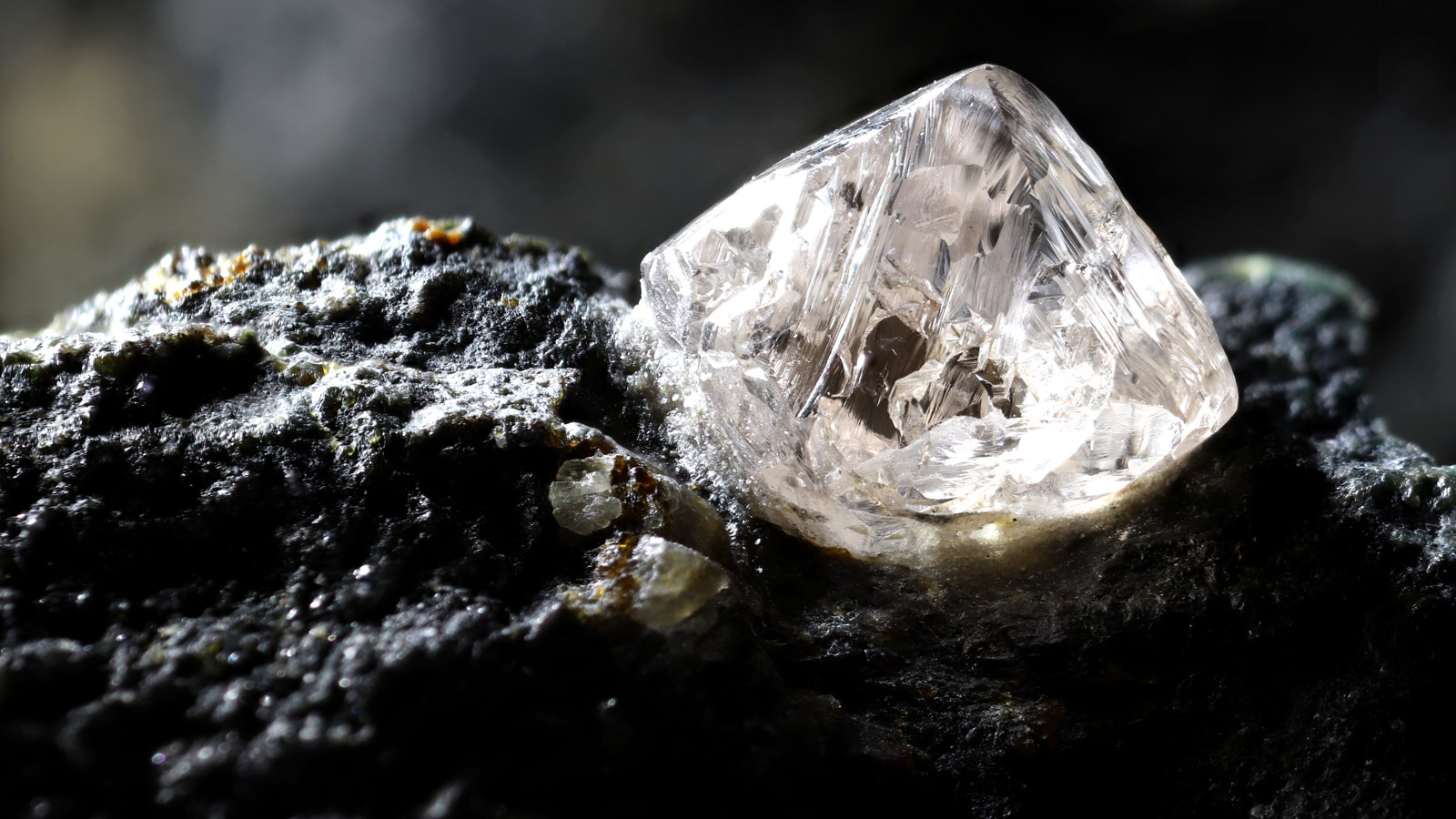Argonne, UNLV, UChicago scientists confirm water ‘trapped’ in diamonds deep below Earth’s surface
A team of scientists from the University of Nevada, Las Vegas and the University of Chicago used the Advanced Photon Source (APS) at the U.S. Department of Energy’s (DOE) Argonne National Laboratory to identify a form of water, known as Ice-VII, by measuring its crystal structure while trapped in the diamond.
The team used the extremely bright X-ray beams at the APS — a billion times more intense than conventional X-rays —to confirm the presence of this naturally occurring form of water, which must have formed at least 410 kilometers below the Earth’s surface, much deeper than originally thought.
This is the first time Ice-VII has been discovered in a natural sample, making the compound a new mineral accepted by the International Mineralogical Association. The team’s discovery could change scientists’ understanding of how water circulates in our planet and how heat escapes from deep in the Earth’s mantle. This discovery may also help researchers create new, more accurate models of how rocks in the mantle move and the driving mechanisms for plate tectonics, which play a role in earthquakes. The APS is a DOE Office of Science User Facility.
University of Nevada, Reno partners with Argonne to offer training in nuclear packaging
Nuclear packaging — used for the storage, transport and disposal of radioactive waste — is a global challenge, critical to ensuring U.S. safety and security. Argonne has partnered with the University of Nevada, Reno to offer DOE training courses for the university’s graduate certificate program in nuclear packaging. The unprecedented partnership leverages the resources and expertise of the DOE, national laboratories and academia.
The holistic, experience-driven program appeals to a diverse community of engineers, analysts and users in the United States and abroad. Students report that the program offers invaluable practical knowledge that permits them to immediately ramp up their skills to support the safe and secure transportation of nuclear and other radioactive materials.
The university has conducted nuclear packaging research since 1993. Four other national laboratories — Lawrence Livermore, Oak Ridge, Sandia and Savannah River — have joined Argonne in the training effort. To date, 88 students have enrolled in the course; the first certificate was awarded in 2017.
Albemarle Corporation, Argonne streamline lithium extraction from brine
As the global demand for electric vehicles continues to grow, auto manufacturers in the United States seek a domestic supply of lithium, a key component in EV batteries. In response to this increasing need, global chemicals producer Albemarle Corporation has partnered with Argonne to identify more efficient ways to produce lithium at its Silver Peak plant in southwestern Nevada.
Under a DOE grant, an Argonne/Albemarle research team is investigating processes that would streamline the commercial production of lithium hydroxide from brine resources at Albemarle’s plant in Nevada’s Clayton Valley. The Silver Peak site is said to be the only lithium-producing resource in the United States.
The team’s goal is to design a novel technology that would eliminate steps in the current state- of-the-art process by going directly from lithium chloride to lithium hydroxide. Such a technology, scientists believe, would mark a pivotal discovery in advancing green technology.
Argonne, UNLV recycle used fuel from nuclear reactors
Collaborating with chemist Artem V. Gelis at UNLV, Argonne researchers leveraged the flexibility of 3D printing to improve the recycling process to recover up to 97% of used fuel from nuclear reactors and extract elements with the longest half-life. Their new approach could drastically reduce the amount of used fuel stored and the time it remains hazardous.
The first step requires separating highly radioactive actinide isotopes from the rare earth metals, or lanthanides. This step involves a novel technique called Actinide Lanthanide Separation Process (ALSEP), but researchers previously had been unable to scale ALSEP for industrial purposes. The team redesigned ALSEP using 3D printers to make devices called centrifugal contactors. Linking 20 contactors, they created a continuous ALSEP process, bridging the gap between small, lab-scale demonstrations to large, pilot-scale equipment. The printed parts are inexpensively fabricated and can be reprinted and replaced quickly in case of part failure.
Besides expediting the separation process, the contactor design offers an added layer of protection against nuclear proliferation: Tubes connecting the contactors are buried in each module, making it difficult to access and divert radioactive materials for unlawful purposes.




